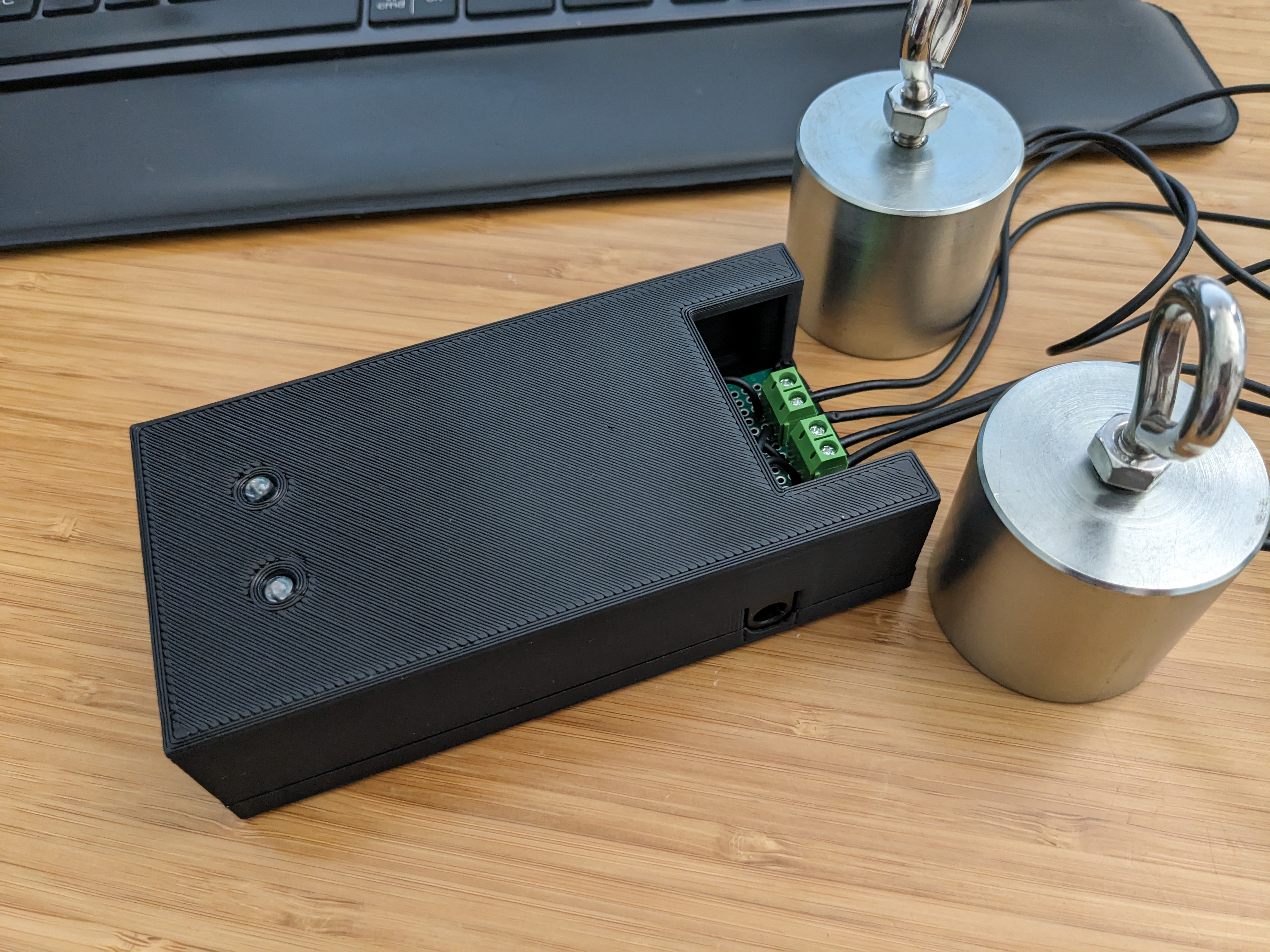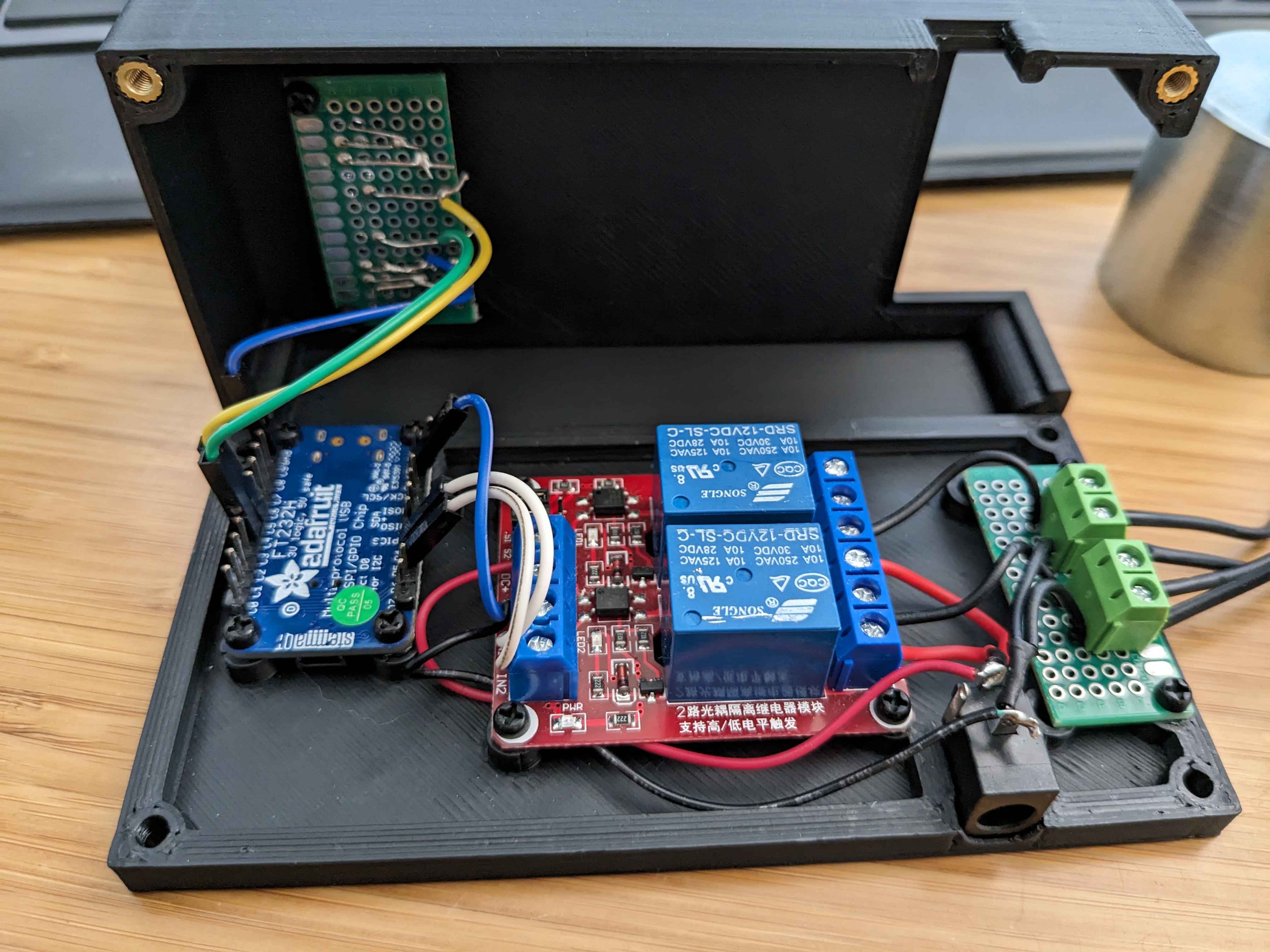The goal of this project is to create a fully computer-controlled self bondage experience similar to what I’d previously explored here
As part of that, I needed a computer-controlled release mechanism. Here’s what I’ve come up with:

The control box has two outputs for electromagnets. I have two BDE-1716-12 from buymagnets.com. These have a holding force of 160lbs (~72kg) and are 100% duty-cycle rated so they don’t meaningfully heat up when operated for a long time. If you want to build something like this yourself make sure you get quality magnets! Some magnets will get extremely hot after even brief usage.
Each magnet can be controlled independently in software and there are red LEDs on top of the box to indicate when they’re on.
Here’s a look at the inside:

On the left you can see an adafruit FT232H. This has a USB-C port and can be controlled using a python library on a computer. It basically gives the computer several GPIO pins that can be set high(3.3v) or low(0v) in software. This allows the program to turn on the LEDs as well as the relays controlling the magnet power.
The red board in the center is a relay module containing 2 12v relays. The magnets also take 12v so I can power the relay board by the same power supply as the magnets.
When the FT232H outputs a 3.3v control signal to the relay board it connects the power to one of the magnets.
here’s a very simple python script demonstrating usage. I’ve created a class MagnetLock() that will simultaneously toggle the LED and magnet pins on the FT232H. There’s also a KeyHolder class that can have MagnetLocks attached to it and control them with a timer.
Lots more can be done with this but I thought I would show what I came up with.
Safety note: never rely on a computer controlled release as your only release method. This script has multiple failure modes that leave the magnets locked! More work is required - this is just an example of what control could look like

I bet this would be really hot for any sort of risk-taking game… I’m picturing a scene where the locks are normally open, but if you draw an unlucky (or a lucky? haha) roll, you hear the relays click and have a few seconds to think about what’s coming next.
I hesitate to do too much feature-suggestion since there’s no way I’d be able to help, but to that end it would be hot if there was a presence-detection feature where the software could know if the magnets are in place if it decides to engage the lock. The game doesn’t work until you put yourself on the line sort of thing 🔥